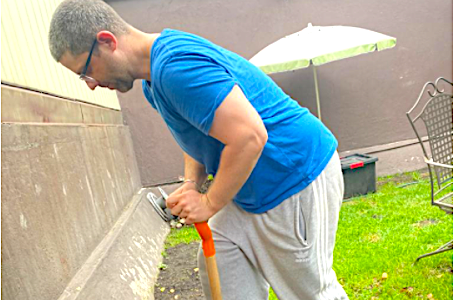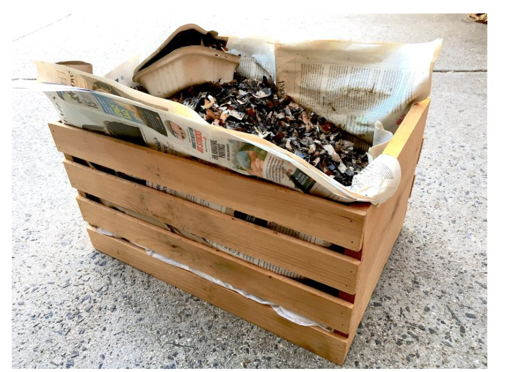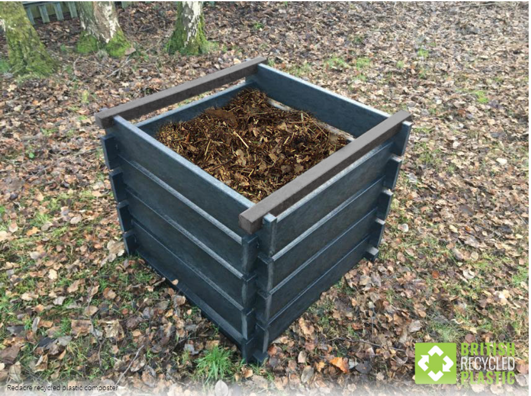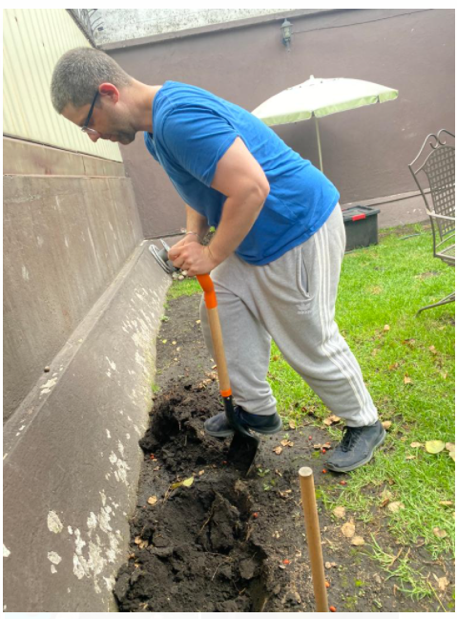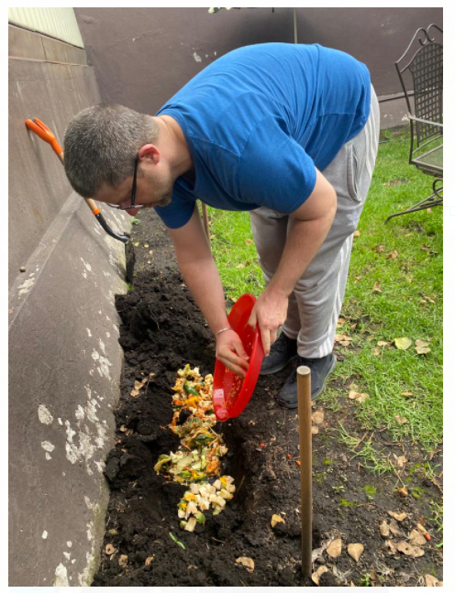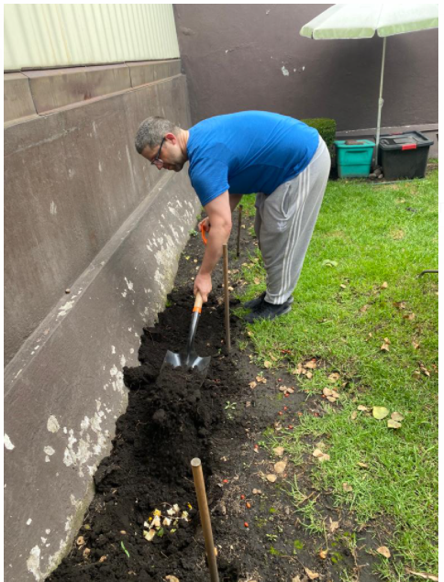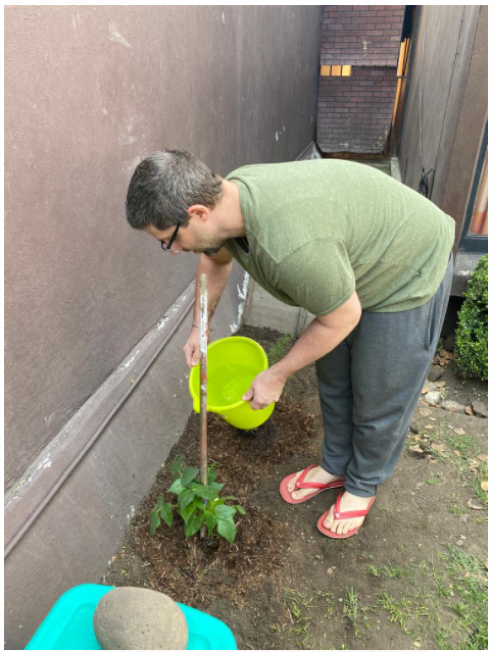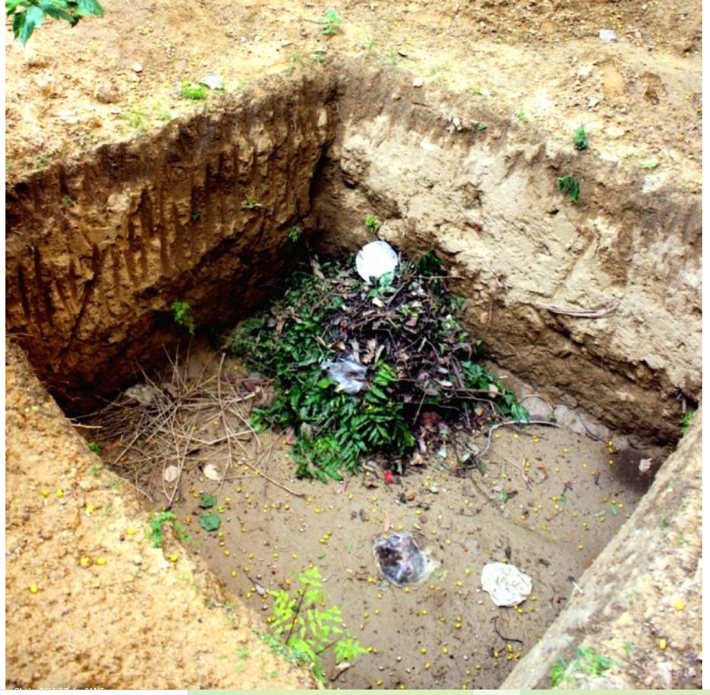Many people living in cities, apartment complexes, or housing communities with little or no yard space think that composting is not possible or practical. However, I will demonstrate that composting is possible in even the smallest city apartment.
Mother Nature desperately needs every person to compost – especially those living in the concrete jungles of our world’s major cities!

Amma has said that there was never a mahatma (saint or Realized Being) that ever existed who wasted anything!
This is a humbling thought for those of us seeking true spiritual growth.
In the past, I wrote a blog about red worm composting. Although it is possible to maintain a small to moderate sized worm bin in a kitchen or closet, many city dwellers with small apartments or homes may feel there is not enough space for such an endeavor. In addition, if red worm composting seems too “high maintenance” for your liking, I will suggest some easier methods here.
With urban composting – especially in composting experiments which seem limited by space – the first step to full success is source reduction. One of the biggest environmental issues is the vast amount of food rotting in landfills which releases damaging methane gas into the atmosphere.
“In the United States, food waste is estimated at between 30-40 percent of the food supply. This estimate, based on estimates from USDA’s Economic Research Service of 31 percent food loss at the retail and consumer levels, corresponded to approximately 133 billion pounds and $161 billion worth of food in 2010.”
Source: USDA Website
Reducing Your Waste
How sad it is that there are so many people going without food – even starving to death – and 30-40 percent of the United States’ food supply is literally thrown away in landfills.
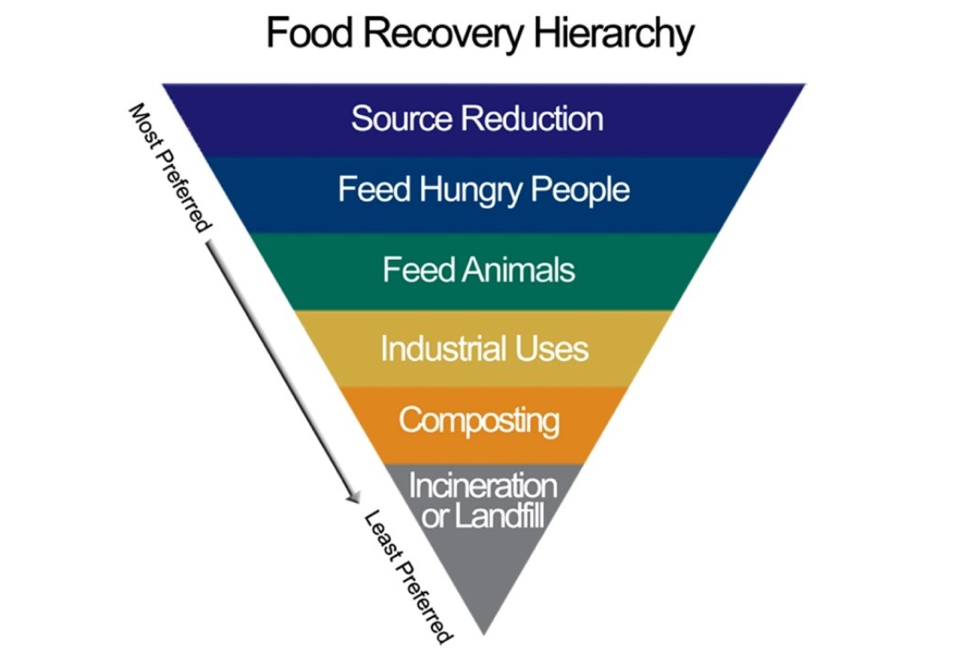
According to the USDA, Source Reduction is the preferred method to reducing food waste and the ultimate pollution it causes – more important than composting itself. Source Reduction means that we consciously monitor and reduce the waste we produce at home and at work. Source Reduction is also more ideal than recycling, repurposing, and upcycling.
To grow spiritually, we must learn to take less from the environment and people; and learn to give more.`
Regarding the environment, “giving more” means using less and buying less food per grocery store trip.
Is Composting On A Smaller Scale Even Practical?
Recently, I noticed a dear friend of mine who is concerned about the environment throw away food scraps and some recyclables in front of me. I gently asked her why she was doing this when she truly was concerned about the environment.
She responded: “I am convinced that individuals can no longer make a difference unless major companies change their ways.”
My question would be: Well, who supports these major corporations? We do.
Pay attention to where you spend your money. Do some research. Do not support companies that do not have a MINIMAL “green friendly policy” for their company procedures and waste production.
Humans do not like to take responsibility.
It is the Nature of the Ego to want bodily comfort (which generally does not support Mother Nature’s health) and to say: “Well, HE, SHE, or THEY are doing it! What is the use of me trying to compost?”
This egoistic idea is, in fact, the impractical, apathetic problem.
In a recent Amritaculture Special Presentation on the “The 5 Elements of Creation,” Swami Shantamritananda Puri spoke on how Amma had said many of Her children would be sent into the world. Swamiji mentioned that Amma said (I paraphrase), “Do not expect to change the world. It is enough if you yourself do not change (in a negative way).”
Let us deeply take Amma’s wisdom into our hearts and apply this to Urban Composting!
Do not worry about the scale of your composting experiment. Just do it; and do it sincerely with love for Amma and the Earth.
Buy less food per shopping expedition. Notice how much you throw away each day and week. Modify your shopping list as you move forward to reduce your need to compost to the very minimum.
Whatever method of composting you use, even if you compost only a portion of your food waste, multiply that by the 8 billion people on this planet. If we can make it part of our human culture that all humans do this minimal effort, the environment might have a fighting chance to heal. Also, if 8 billion people (or even a quarter of this) decide to not support mega-corporations with no view to environmental protection – how long can those criminal companies stay in business?
Let each of us act on the environmental changes we want to see others doing. Shine for all to see! This is true sadhana (spiritual practice) and true seva (selfless service).
Bokashi Bins
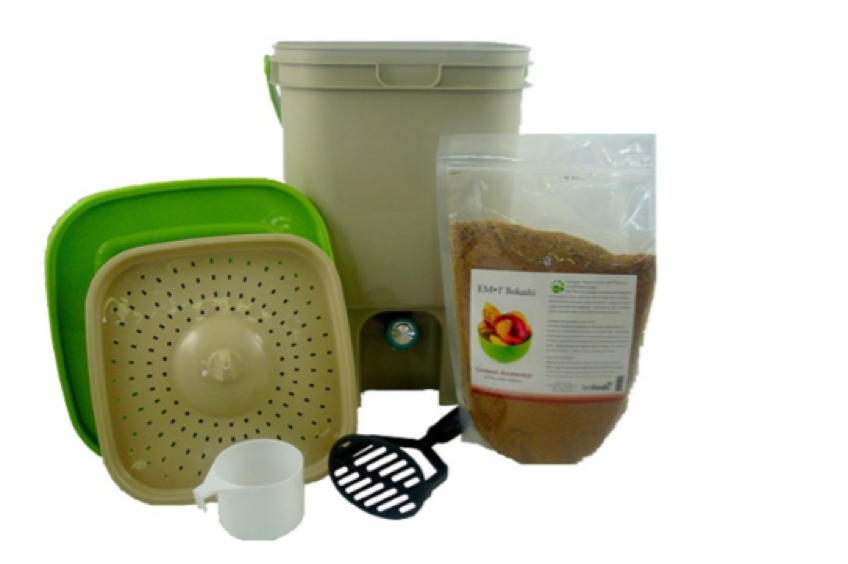
PROS
• Bokashi Bins are a very easy method of clean composting that uses minimal kitchen space.
• All kitchen scraps (vegetable, meat, and dairy) can go in the bin. Bones are the one exception and moldy foods are not recommended.
• It produces a liquid fertilizer which can be added to plants or gardens.
• The internal broken-down compost can be added to plants or gardens.
• No odors are perceptible.
CONS
• There is the ongoing expense of purchasing the Bokashi fermentation mix which you add over layers of compost. Bokashi mix is a sawdust/grain and uses a specially designed micro-organism mix made up of lactic acid bacteria, yeasts, photosynthetic bacteria, actinomycetes, and fungi.
• This is an anerobic process of composting which does release some methane gas – not constantly; but when the sealed bin is opened.
• Ultimately, things break. The hard plastic parts are recyclable. Look for Bokashi Mix refills that are in paper based packaging instead of the plastic one seen in Figure 2.
Electronic Composters

PROS
• There are a lot of electronic composters on the market.
• Most brands allow kitchen scraps (vegetable, meat, and dairy) to go in. Bones and fruit seeds (like peach pits) are not permitted for some brands – so read the fine print.
• No odors are perceptible.
CONS
• They tend to be expensive — $300 USD or higher. You must balance the cost with the ease of use, the fact you do not need repeat purchase of fermentation mixes or liquids, that they do not require bodily strength (like Trench Composting discussed later in this blog), and they are “clean” – no dirt will get on your hands!
• I am suspicious of the length of time these machines last. In our culture, we do not often repair items but through them away. Many areas of the world do not offer electrical appliance recycling. I would hate to see more things piling up in landfills…
To explore more about electronic composters, this YouTube link may be of interest:
Now, we will review urban composting methods which require more effort but have little expense, a onetime expense, or even no expense at all. Not all methods will work for all people.
Soil Crates
Soil Crates are easy to use and in some of its variations they are very environmentally friendly.
Soil Crates are traditionally made from wood – which requires a simple YouTube search for DIY people! Alternately, you can pay a handy friend to make you one.
(See hard plastic versions below.)
If you have a small green space or a balcony, this is a marvelous method of composting that is relatively effortless. You DO NOT need a massive soil crate to make a BIG DIFFERENCE.
Create the bin according to your green space’s or balcony’s dimensions.
Add soil. Add food scraps. Done.
Once a week rotate the compost with a hand shovel or a normal shovel. Add water (keep it moist!) Keep it protected and covered from rain.
Insects and micro-organisms will come to help you!
Do not add meat, bones, or dairy – otherwise, you will attract rodents, raccoons, and other undesirable animal friends.
The food scraps break down relatively fast. The soil becomes “living soil” which can be used for potted houseplants or blended into your garden’s soil.
Figure 5: You can purchase online hard plastic versions of the same with or without a lid.
Pit Or Trench Composting
I live right in the middle of the bustling capitol of Toluca, State of Mexico, Mexico – our home base for GreenFriends Mexico!
I am fortunate to have a small garden in front of my home.
I use trench composting all the time. I have a trench dug and I bury a lot food scraps there. The earth worms love me!
The food decomposes shockingly fast which creates living soil rich in composted fertilizer. This soil becomes exceptionally sponge-like, and less watering is needed when I plant veggies and flowers along the trench.
When I lived at Amritapuri in 2006, I regularly composted via the trench method which is what inspires me even today to continue doing so.
You can also reserve one area of your green space to dig a pit and bury the food scraps in the pit. You can use the same pit monthly over and over. The food scraps will be long gone when you come back!
Some people make more elaborate pits if they have larger green spaces and like the idea (see below).
Figure 10: This is a large compost pit dug out in Delhi, India. The dirt is kept aside as food scraps and cardboard are added, a layer of soil is placed on top. A cover of wood or some other device can be used to prevent people from falling in. I have a very small form of this in my front yard in the city of Toluca. Do not ever think that a smaller scale is ineffective! In a tiny pit, I compost a ton of used napkins, food scraps, and cardboard boxes from Amazon or cereal boxes, etc. It works and it works fast! Dried leaves, twigs, and lawn scraps can go in, too!
What Do I Do With All This Compost? I Live In The City!!!
A common concern is what to do with the compost generated in the house.
Here are some brief ideas:
• Mix your compost in with soil for potted plants in your apartment or urban home
• Go on a hike or to a city park and sprinkle it over the grass or at the base of a tree as you chant Lokaha Samastaha Sukhino Bhavantu or your mantra.
• Share the compost with neighbors or community gardens in your area.
• Trench or pit compost if a small green area is available.
Conclusion
I hope this stimulates many more ideas for you to compost in cities or in homes with little or no green space as this small article does not come close to exhausting all the possibilities out there! Challenge yourself to start a composting experiment today.
Offer this to the Divine – without delay!
The Earth needs YOU.
If you have any questions, please feel free to email amritacultureteam@gmail.com.
Om Amriteshwaryai,
With Love,
Eknath
